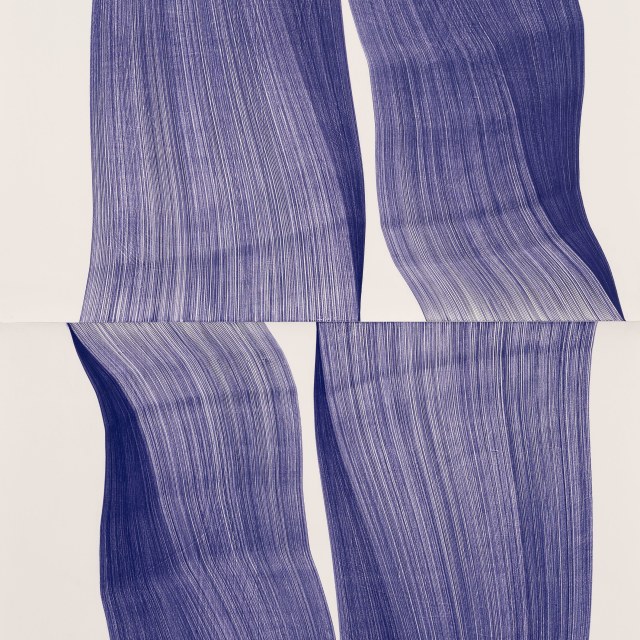For Thomas Müller (b. 1959, Frankfurt), drawing is an endless field of experimentation. His delicate, abstract structures are autonomous compositions, yet simultaneously function as jigsaw pieces of a larger whole. His works often transcend the frame of the paper to connect with neighboring formations. Müller frequently presents his drawings (often on A4 format) in open grid formations, reinforcing these mutual relationships.
The unfinished, the processual, and the experimental are central. Apart from the support—Müller works exclusively on paper—nothing is predetermined. The drawings emerge literally from the void, without preconceived components. Whether involving dynamic lines reminiscent of macroscopic details of a wave, or extremely reduced compositions with just a few markings: they all express a yearning for complementary structures.
In his use of materials, Müller constantly pushes the boundaries of the medium. He combines pencil, ink, crayon, oil, and marker, and sometimes applies collage techniques. In his recent series, he introduces a vivid orange and vigorous blobs of ink, reminiscent of his earlier periods characterized by black ink. In this way, Müller captures the essence of drawing in its most condensed and exploratory form.
Recently, Thomas Müller received the Kubus.Sparda-Kunstpreis (2024). The extensive international appreciation for his oeuvre is reflected in the impressive list of collections holding his work. These include iconic institutions such as the Centre Georges Pompidou and the Collection Florence & Daniel Guerlain (Paris), the Museum of Fine Arts (Budapest), and The Marion Koogler McNay Art Museum (Texas).
In Germany, his work is prominently represented in museum collections, including the Hamburger Kunsthalle, Städel Museum (Frankfurt), Staatliche Museen zu Berlin (Kupferstichkabinett), Kunstmuseum Bonn, Kunstmuseum Stuttgart, Staatsgalerie Stuttgart, Museum Kunstpalast (Düsseldorf), Kolumba (Cologne), and ZKM (Karlsruhe).
